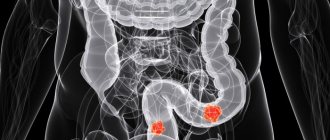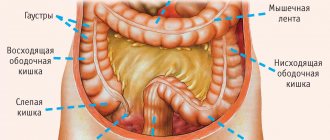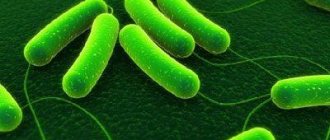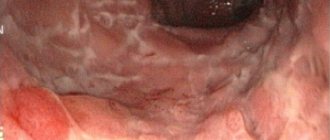Have you been struggling with GASTRITIS and ULCERS for many years without success?
“You will be amazed at how easy it is to cure gastritis and ulcers just by taking it every day...
Read more "
Intestinal infection is a group of diseases of the gastrointestinal tract caused by certain pathogens (viruses, bacteria, toxins), among which the most common are salmonella, shigella, cholera, staphylococci, rotavirus, enterovirus, etc.
Among the main factors that provoke the appearance of intestinal infection are the following:
- eating unwashed vegetables and fruits;
- failure to comply with personal hygiene rules;
- replenishing the body with untreated water from questionable sources;
- inattention to the expiration dates of products, consumption of expired canned food, stale meat, eggs, etc.
These factors can lead to harmful substances entering the body and causing diseases such as: food poisoning, diarrhea, salmonellosis, botulism, cholera, dysentery, escherichiosis, staphylococcal infection, klebsiellosis, rotavirus infection, etc.
Intestinal infection. Main symptoms in adults
The pathogen, entering the human body through the mouth, moves further into the gastrointestinal tract. Bacteria or viruses begin to actively multiply. The following symptoms characteristic of intestinal infection in adults are noted:
- feeling of weakness and lethargy;
- lack of appetite;
- headache;
- diarrhea or constipation;
- pain in the stomach and intestines;
- elevated temperature;
- flatulence (excessive gas formation);
- nausea and vomiting associated with intoxication of the body;
- disorders in the immune system (weakened immunity);
- poor sleep;
- the appearance of skin rashes, itching, burning, etc.
Types of intestinal bacterial infections
Some infections can be called not too serious, but among the diseases there are those that, without proper and timely treatment, can even lead to death. Especially intestinal infections in children whose bodies are not yet strong enough.
All pathogens of bacterial intestinal infections enter the body through the nutritional route, that is, with water and food. It is worth considering the most serious of them.
Typhoid fever
It is worth immediately noting that this disease no longer occurs often, but once upon a time many people died from typhus, and even today epidemics are recorded in poor regions of our planet. This is a truly serious and severe disease that is caused by the bacterium Salmonella typh. It is released into the environment along with the urine and feces of a sick person, which explains typhus outbreaks in countries where the level of hygiene is extremely low.
The carriers of the disease can be insects that transport particles of infected excrement on their legs, leaving them on food. If excrement gets into a source of drinking water, infection is inevitable when people drink raw water without treating it.
When the bacterium enters the body, it affects not only the mucous membrane, but also the lymphatic system of the intestine, causing severe intoxication. The first symptoms of infection may appear after 3 weeks. As a rule, the onset of the disease is acute.
Symptoms of typhoid fever:
- increase in body temperature up to 40 degrees;
- Strong headache;
- weakness;
- insomnia;
- anorexia;
- constipation or loose stools;
- flatulence;
- abdominal pain;
- enlargement, hardening of the liver and spleen;
- a characteristic rash (roseola) on the chest and abdomen - appears on the 8-9th day of illness;
- apathy, confusion, delirium - in severe cases.
Typhoid fever is dangerous in itself, but, on top of everything else, it causes serious complications. As a result of the activity of bacteria, ulcers form on the intestinal walls, which is fraught with bleeding and intestinal perforation. Also, infectious-toxic shock is possible, which leads to coma and death.
Salmonellosis
A fairly common bacterial infection caused by salmonella. There are about 700 species of these bacteria in total. The source of microorganisms are birds, animals and humans (carrier or patient).
As a rule, a person becomes infected from food - salmonella can live for a long time in meat and dairy products, and tolerate freezing and smoking well.
Infection occurs especially often after eating raw chicken eggs. The only thing that has a detrimental effect on the bacteria is long-term heat treatment of products.
In addition, you can become infected from a sick person through personal contact. Salmonellosis in this regard is especially dangerous because it often does not manifest itself, that is, a person does not get sick, but is a carrier of the infection and can infect others.
When infected, salmonella enters the small intestine and actively multiplies there, releasing toxins. The first symptoms appear at different intervals, the incubation period can range from 6 to 72 hours.
What symptoms can the infection cause? Typical for intestinal disease:
- weakness;
- heat;
- nausea and vomiting;
- abdominal pain;
- diarrhea.
Stool caused by salmonellosis is frequent, profuse, watery, with a characteristic green tint. The disease is most dangerous due to intoxication and severe dehydration of the body, as well as complications - renal failure, peritonitis, polyarthritis, infectious-toxic shock. However, hospitalization for salmonellosis is carried out only for children, the elderly, and workers in medical or food institutions.
Dysentery
The causative agent of this disease is bacteria of the genus Shigella. The source of infection is a sick person, infection occurs through contact and household contact - dysentery is also called the disease of dirty hands. In addition, the source of contamination may be water, unwashed or insufficiently heat-treated food.
The bacterium affects the large intestine. The incubation period can last from several hours to several days.
Symptoms of dysentery:
- diarrhea;
- tenesmus;
- false urge to defecate;
- nausea and vomiting;
- fever and high temperature;
- weakness and poor health;
- decreased appetite;
- headache.
The main and most characteristic symptom of dysentery is the induced stool - frequent, liquid, but not too abundant. The stool is dark green in color and contains mucus, pus and blood.
As with most intestinal infections, the patient develops severe intoxication and dehydration. As for complications, intestinal rupture is possible.
Coli infection
This disease is also called coli-enteritis or escherichiosis. It can be caused by E. coli, or more precisely, its pathogenic strains. Mostly children under 2 years of age and newborns suffer from coli infection. Premature babies, bottle-fed babies, and babies with rickets or malnutrition are especially susceptible to infection. Among adults, people with immunodeficiency or diseases that reduce the body's resistance are affected.
The source of infection is sick people, infection occurs through contact and household contact, through food. The most common source is “homemade, fresh” milk that has not been boiled. Infection through household contact is also possible.
The incubation period for coli enteritis ranges from 12 hours to 6 days. The severity of the disease increases gradually.
Infection in children manifests itself as follows:
- vomit;
- regurgitation;
- diarrhea;
- bloating;
- anxiety;
- low-grade fever;
- weight loss;
- dry skin;
- dehydration.
Feces during coli infection are yellow, liquid, and contain undigested food and glassy mucus. As the disease progresses, the amount of water in the stool increases, to the point that it comes out in a stream.
The danger of this intestinal infection is that the microorganism can colonize other organs, causing pyelonephritis, meningitis, otitis, and in some cases sepsis develops. Additionally, dehydration in children is especially serious and requires hospitalization in all cases.
Yersiniosis
It refers to zoonotic infections, that is, those in which the main source of infection is animals and birds. As a rule, these are livestock, dogs and rodents. The disease is caused by the bacteria Yersinia enterocolitica and Yersinia pseudotuberculosis. The peculiarity of these microorganisms is their resistance to cold; they can multiply in food, even stored in the refrigerator.
Human infection occurs through the consumption of food products of animal origin, if they were obtained from sick livestock (milk, meat, semi-finished products). Animal feces that fall into water or onto vegetables and fruits can also be a factor in the transmission of infection. Contact-household transmission is possible, but such cases are rare.
When infected, three forms of yersiniosis may develop: generalized, intestinal, and secondary focal.
Symptoms of the intestinal form (appear after 1–6 days):
- fever up to 40 degrees;
- headache;
- weakness;
- aches in joints and muscles;
- decreased appetite;
- CNS disorders (in severe cases);
- abdominal pain;
- dyspepsia;
- loose stools, sometimes with blood;
- nausea and vomiting;
- joint pain;
- moderate enlargement of lymph nodes.
In some cases, catarrhal symptoms and a rash on the body, mainly on the palms and soles, which is accompanied by burning and peeling of the skin, may appear.
Complications of yersiniosis can be acute appendicitis, terminal yelitis, infectious hepatitis, myocarditis, perforation of the intestinal wall, adhesions, inflammatory diseases of the nervous, genitourinary system, and musculoskeletal system.
First aid for intestinal infection
If an intestinal infection develops rapidly, you should immediately call an ambulance. The situation may be so critical that before the medical team arrives, it is necessary to urgently provide first aid to the person. To do this you should:
- Calm the patient and put him to bed, while preparing containers for vomit and feces.
- In case of chills, cover the person with a blanket and place a warm heating pad on the feet.
- If possible, place the patient in a hotel room to protect other family members, especially children and the elderly, from contracting an intestinal infection.
- Give 1-1.5 minutes of water to drink, and then induce vomiting to rinse the stomach.
- Provide the patient with plenty of warm fluids to avoid possible dehydration.
- Give an absorbent to reduce the amount of toxins and remove them from the body.
Viral intestinal infections
The first thing you should know is that intestinal infections can be viral and bacterial, and the first of them are divided into three more categories: rotavirus, enterovirus and adenovirus types.
The main routes of infection in all cases are failure to comply with simple rules of sanitation and hygiene (through dirty food, hands or objects), as well as the pathogen entering the body through airborne droplets.
If we talk about enteroviruses, then such a disease occurs with a number of acute symptoms, which can be completely different (which makes diagnosis difficult):
- muscle pain;
- fever;
- convulsions;
- drowsiness;
- tearfulness of the eyes;
- tachycardia;
- weakness;
- heartache;
- runny nose and sore throat;
- diarrhea.
A sign such as high temperature remains unchanged, while other symptoms depend on the type of enterovirus, which can affect both the muscles and the nervous system, skin, and cardiovascular system.
In turn, adenoviral infection is not very common and mainly affects the mucous membranes of the eyes and nose, but if the pathogen enters the small intestine it can cause vomiting, diarrhea and loss of appetite (although all symptoms usually disappear within a couple of days).
Finally, the most common viral type of intestinal infection is rotavirus, which is also called stomach or intestinal flu. The incubation period can last from one to five days, after which the disease enters the active phase, and during this period the person must be isolated from others to prevent the spread of the virus. Both adults and children are susceptible to the disease, and suffer it somewhat more severely. Symptoms are generally similar to enterovirus infections and include high fever (up to 39 degrees), diarrhea, vomiting, acute abdominal pain, runny nose and sore throat. Again, the cause is most often unsanitary conditions - contaminated food or hands, and almost always a person “gets acquainted” with this disease in kindergarten or school, where outbreaks of rotavirus epidemics are common. However, over time, the body begins to fight the infection more effectively, developing immunity to it, so that each subsequent case is more easily tolerated than the previous one.
Diagnosis of intestinal infection
Sometimes the symptoms of intestinal infection in adults are very similar to those that appear with other diseases (appendicitis, pneumonia, myocardial infarction, ectopic pregnancy, etc.). To correctly establish a diagnosis, it is necessary to undergo a bacteriological examination prescribed by an infectious disease specialist: a stool and vomit test. If necessary, you should undergo a special test to determine the presence of antibodies to infectious agents.
Non-cholera vibrios
Vibrio parahaemolyticus and a number of other non-cholera vibrios, as well as V. cholerae non-O1, cause acute diarrhea. They live in sea water, most diseases occur in the warm season (increased reproduction), infection occurs when taking thermally under-processed “seafood” - oysters, crabs, shrimp, scallops. A number of vibrios cause wound infections in seawater injuries, and septicemia has been described in immunodeficient individuals. The infection is not transmitted from person to person. Incubation 5-92 hours.
Drug sensitivity to chloramphenicol, cefataxime, tetracyclines, fluoroquinolones.
Clinical manifestations. Watery diarrhea (A05.3) with a sudden onset, with cramping pain, low temperature in half of the cases and vomiting in 30% of patients.
Diagnostic tests: the pathogen can be cultured from vomit, stool, or blood, but its identification requires special methods.
Treatment. Rehydration, cefotaxime, etc. are taken for more severe forms.
Nutrition for intestinal infection
It is important to stick to your diet. At first, it is better to refuse food altogether, as it will become an irritant to the gastrointestinal tract and can provoke the development of bacteria. Oatmeal and rice porridge have beneficial properties, having a calming effect on the intestines.
Nutrition should be gentle and not lead to mechanical injury to the walls of the stomach. It is advisable to consume products:
- slowing down intestinal motility (strong tea, blueberries);
- having a viscous consistency (jelly, grated porridge, slimy soups, cottage cheese and kefir);
- steamed (fish, lean meat).
You should definitely include fermented milk products in your diet and don’t forget to drink plenty of fluids. If you have an intestinal infection, salty, spicy, sour, fried, as well as raw vegetables and fruits for some time are contraindicated.
Treatment
First of all, it is aimed at destroying pathogenic microorganisms, so the basis of therapy is antibiotics or intestinal antiseptics. Nowadays, broad-spectrum drugs are mainly used - their advantage is that treatment can be started even before the pathogen is identified, which is critical, since the results of bacterial culture are obtained only after a few days.
In all cases, sorbents are prescribed, which ensure accelerated removal of toxins from the body. As the condition normalizes, patients are prescribed probiotics.
The third, important component of therapy is rehydration. Along with bowel movements, the patient loses a lot of fluid and salts, which can lead to serious consequences. If a person is not admitted to a hospital, he is prescribed to drink plenty of fluids in small portions. In a hospital setting, IVs are given.
Otherwise, symptomatic treatment is prescribed - antipyretics, antidiarrheal drugs, and so on. It is imperative that both the child and the adult observe bed rest and adhere to dietary nutrition.
A dangerous disease is intestinal infections, which often occur in people of different age groups. Developing pathological processes negatively affect the functioning of the gastrointestinal tract.
The causative agents of the disease are viruses, toxins, and bacteria. A person develops characteristic signs of pathology, indicating the degree and severity of the infection. To solve the problem, you need the help of a doctor and properly selected therapy.
Prevention of intestinal infections
Simple rules will help you avoid the unpleasant consequences of an intestinal infection:
- Follow the rules of personal hygiene (wash your hands before eating, after interacting with animals, going to the toilet, wash dishes and all kitchen surfaces well).
- Control rodents and insects.
- Store food in separate closed containers (meat separately from vegetables, fish from fruits, etc.).
- Do not leave prepared foods at room temperature for more than 2 hours.
- Use separate knives and cutting boards for different foods.
- Prepare food well - boil and fry everything well, reheating the first courses, bring them to a boil.
- Store perishable foods in the refrigerator.
- Pay attention to the expiration dates of products, buy only fresh and properly packaged products.
- Wash vegetables and fruits thoroughly before eating.
- Drink only boiled or purified water.
Signs of a Shigella bacterial infection (dysentery)
There are four known types of Shigella, each causing symptoms of a certain intensity, because they secrete toxins to varying degrees, and they all parasitize the large intestine.
From the moment of infection to the appearance of the first signs, it takes from a day to a week, the temperature suddenly rises and severe abdominal pain occurs with simultaneous bowel movements, which somewhat reduces the pain.
At first, the feces are copious, but then in very small portions - “rectal spitting” mixed with mucus and blood, and “false urges”. This is how dysentery progresses: pain and the need to go to the toilet, a little relief until next time. Depending on the pathogen, the severity of the disease varies, with stools ranging from 5 to 30 times a day. Blood impurities - from streaks to bloody diarrhea. Weakness and cardiac dysfunction develop.
The duration of shigellosis without complications is no more than 10 days, but restoration of the integrity of the mucous membrane is delayed for another couple of weeks.
At the first manifestations of the disease, you must immediately contact a specialist; for this, the Medicine 24/7 clinic has organized an appointment seven days a week and on holidays with a 24-hour appointment. Early initiation of therapy will avoid complications and a chronic process.











